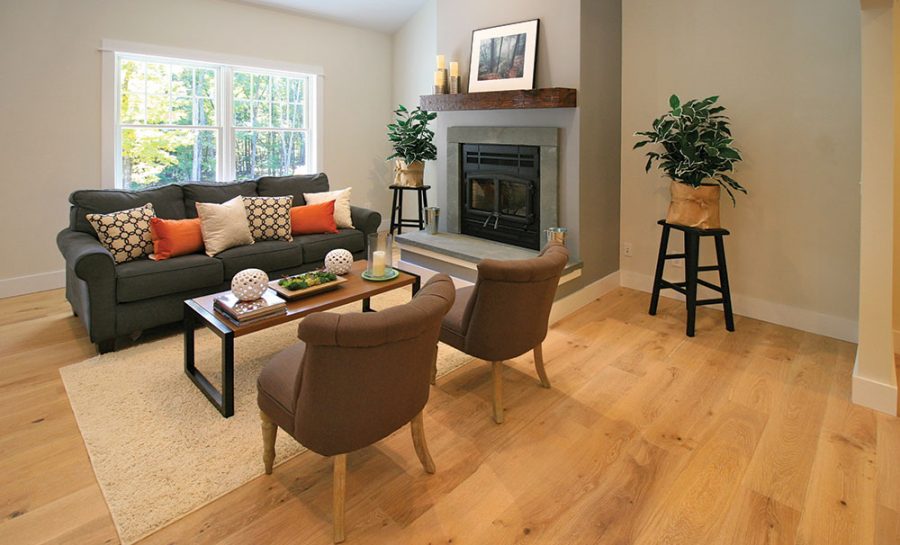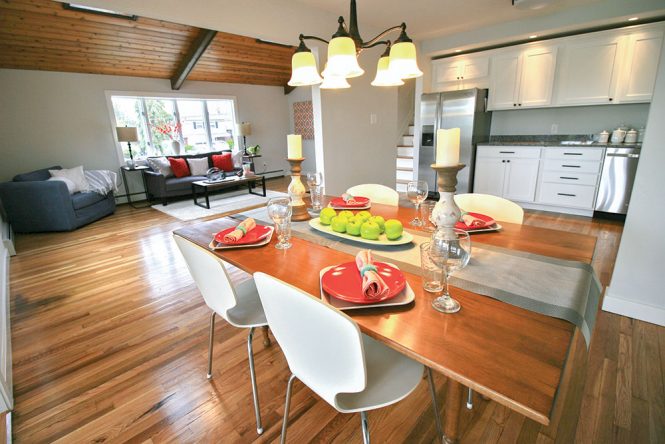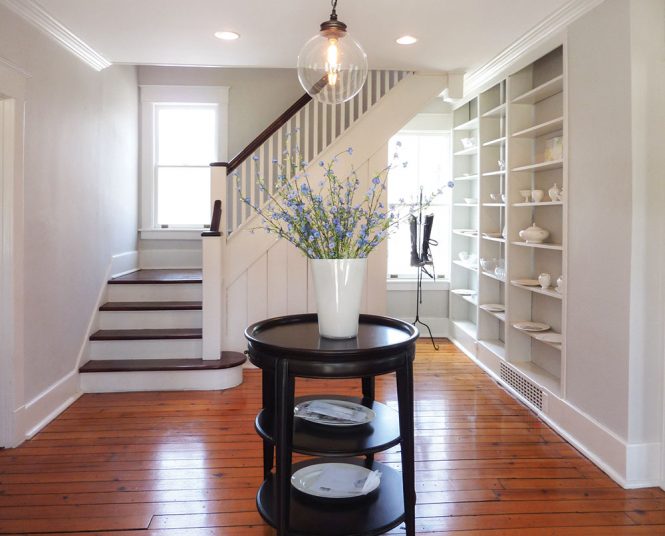Tips on Staging Your Home for Sale
A professionally staged interior can help you sell your house
By Anne Pyburn Craig | Spring 2018 | Features
As anyone who’s ever tried to sell a house knows, you’ve got to make sure the exterior is spruced-up and welcoming. According to a study by Texas Tech University, just boosting a house’s “curb appeal”—by, say, grooming the landscape, power-washing the siding, or repairing damaged walkways—can boost resale value by as much as 13 percent. But all that hard work outside may be for naught if potential buyers walk through that beautifully appointed front entrance into a space that’s cluttered, dark, shabby, or even neat and clean but out of fashion. Welcome to the world of “home staging,” a professional art devoted to helping buyers say yes.
A designer’s bag of tricks
“When buyers are viewing a potential home, they most likely are operating on more of an emotional than an intellectual level,” says Gwen Snyder Siegal of The Nest Design in Saugerties. “This is where staging can make a huge difference. Our goal is to make the buyer fall in love as soon as the front door is open. This means something different for every home because the first thing you see may be a grand living room or it may be a small or dark entry or landing.”
Whatever your house’s physical attributes may be, home stagers have a bag of tricks to minimize flaws, maximize strengths, and entice prospects into imagining just where their own cherished belongings will fit. And staging is effective: one study, from the Real Estate Staging Association, took 89 homes that had been on the market for an average of 166 days and put them through the professional staging process. After staging, the average wait for a first offer was barely over a month.
Industry association stats aside, there’s a lot of psychological common sense behind staging. “The goal with neutralizing a space is to create the broadest appeal with buyers,” says Siegal. “This means depersonalizing, decluttering, and streamlining furnishings and accessories to fit the style of the home. Many times this means modernizing. You can never tell a buyer’s personal style, but it’s important to allow them to visualize themselves living in the home. If they see too much of the homeowner’s personal style or belongings, it may make them feel like they’re intruding.”

The Nest Design used place settings, candles, fresh flowers and a fruit bowl to make this otherwise sparsely furnished, decluttered kitchen/living space look inviting. Photo by Gwen Snyder Siegal/The Nest Design.
The value and pitfalls of DIY staging
If you’re going to attempt to stage your own home, clearly, you’ll need to view your space with a dispassionate eye and get merciless with your favorite things. The upside: It can put you ahead of the moving game. “People have to start packing anyway, so they may as well start getting packed up, donating, and throwing out,” says Pat Green, owner of Ancram-based Hudson Valley Design, Inc. “I believe in tearing down to essentials. No trinkets, no family photos; people will be looking at those and not the architecture. Leave out a few large pieces and books, I use books in all kinds of ways—hardcovers and coffee table books. I also believe in having flowers and fruit as final touches after the hard, dirty work.”
That “hard, dirty work” involves attaining a level of cleanliness that most noncompulsive souls seldom worry about. Utter and complete spotlessness is the goal. Odors and stains can create a subliminal “ewww” reaction that won’t easily be overcome. Painting can work wonders, but it has to be done right. “Stay neutral with paint colors and add pops of color with the décor,” says Siegal. “I don’t advise taking this too far, however. All-white walls can make the home feel cold and all beige can feel uninteresting. The Hudson Valley is very forgiving in this aspect. I stage many homes in the Woodstock area, where buyers are more artistically inclined and actually appreciate some color.”
Some aspects of home staging lend themselves to DIY better than others. You can clean and paint, but the objective gaze of someone with design training and/or real estate experience can be invaluable. “Being an interior designer helps with things like rearranging furniture and modifying window treatments,” says Green. “I know how to work a room easily. If they need area rugs or something, I can send them to my vendors.” Siegal says she keeps an extensive inventory of staging pieces on hand; if you’re going totally DIY, she suggests finding staging pieces through rental companies that work with wedding planners.
Often a partial DIY home staging works best, says Siegal. “Completing minor repairs, painting and cleaning, and modernizing—for example, swapping out outdated lighting fixtures or shabby carpet—these are things you can do,” she says. “But I’d call a stager if I had to sell my own home. It’s truly difficult for the homeowner to look with the buyer’s eye. Especially for furniture and accessory choices and placement, our services are so worth it.”
In the end, staging is an investment; Siegal offers packages ranging from $250 for a half day to $1,200 for the complete “Get It Sold” package, or you can hire her for $60 an hour. “You can do as much or as little as you like,” says Green, “but following staging recommendations does substantially increase your odds of a quick sale.” But showing your home in its best light ultimately pays off. “Home staging always costs much less than that first price reduction,” says Siegal.

An entryway by Hudson Valley Design is staged with fresh flowers and monochrome objects that give the space a lived-in yet impersonal look. Photo by Hudson Valley Design.
